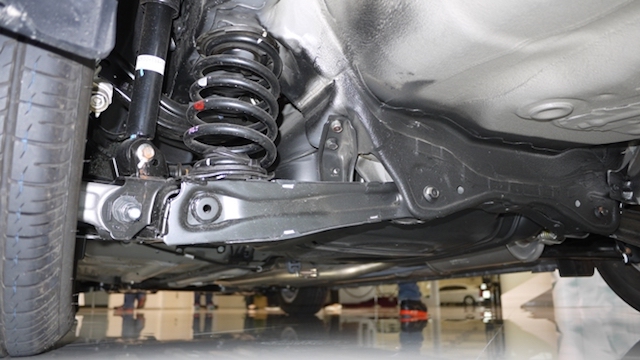Shock absorbers are a fundamental component of a car's suspension system, playing a crucial role in providing a smooth and comfortable ride. Understanding how shock absorbers work is essential for maintaining vehicle safety, stability, and overall performance. In this article, we will delve into the inner workings of shock absorbers, explore their key components, discuss their functionality, highlight different types, emphasize their importance in a vehicle, identify signs of wear and tear, and provide maintenance tips to ensure optimal performance and longevity. Imagine driving in your car down a bumpy road and feeling like you're in a poorly made milkshake. That's where shock absorbers come in. They're like the unsung heroes of your vehicle's suspension system, working hard to keep your ride smooth and your teeth intact. Shock absorbers, or shocks for the cool kids, are mechanical or hydraulic devices designed to absorb and dampen shock impulses, providing a smoother ride by controlling the movement of your car's springs. Basically, they're the zen masters of the road, keeping your car's motion in check.

To understand how shock absorbers work, let's break down their key components:
- Piston - The piston inside the shock absorber moves up and down in response to the movement of your car's springs. It's like the conductor of the shock-absorbing orchestra, directing the flow of hydraulic fluid to keep your ride smooth.
- Valves - No, not the kind you turn on and off. Valves in a shock absorber regulate the flow of hydraulic fluid as the piston moves, controlling the damping force. Think of them as the traffic cops of your suspension system, ensuring everything flows smoothly.
- Fluid - Hydraulic fluid is the lifeblood of a shock absorber, transmitting force from the piston to the valves and absorbing energy from the bumps and jolts of the road. It's like the cushion that softens the blows so you don't feel like you're riding a pogo stick.
Functionality of Shock Absorbers:
Now, let's get down to business and see how these bad boys actually work:
- Dampening Motion - When your car hits a bump or dips into a pothole, the shock absorbers kick into action, absorbing the impact and preventing your car from bouncing around like a kangaroo on caffeine. They dampen the motion, keeping your ride stable and comfortable.
- Control of Spring Oscillations - Your car's springs love to bounce around, but too much spring motion can turn your ride into a rollercoaster. Shock absorbers control these oscillations, ensuring that your car stays firmly planted on the road and doesn't turn into a wild carnival ride.
Types of Shock Absorbers:
Shock absorbers come in different flavors to suit your driving needs. Here are a couple of popular types:
- Twin-Tube Shock Absorbers - These shock absorbers feature an inner and outer tube, with the hydraulic fluid flowing between them. They're great for everyday driving, offering a balance of comfort and performance for your daily commute.
- Monotube Shock Absorbers - Monotube shock absorbers have a single tube design, providing better heat dissipation and performance under extreme conditions. If you're into spirited driving or off-road adventures, these bad boys have got your back.**How Shock Absorbers Keep Your Ride Smooth**
When it comes to shock absorbers, think of them as the unsung heroes of your car's suspension system. They play a crucial role in enhancing your driving experience in more ways than one.
Importance of Shock Absorbers in a Car
- Enhanced Vehicle Stability - Picture this: you're cruising down a bumpy road, but your car feels like it's gliding smoothly. That's the magic of shock absorbers at work. By absorbing the impact of bumps and irregularities on the road, they help keep your vehicle stable and maintain traction.
- Improved Handling and Control - Ever felt like your car is swaying a bit too much around corners? Blame it on worn-out shock absorbers. These components help to stabilize your car's body movement, giving you better handling and control, especially during sudden maneuvers.
Signs of Worn Out Shock Absorbers
- Excessive Bouncing - If it feels like you're riding a rollercoaster on a flat road, your shock absorbers might be on their last legs. Excessive bouncing after hitting a bump or dip is a clear sign that they need attention.
- Uneven Tire Wear - Shock absorbers help distribute weight and maintain even contact between your tires and the road. When they're worn out, you might notice uneven tire wear patterns, which can compromise both your safety and your wallet.
Maintenance Tips for Shock Absorbers
- Regular Inspections - Make it a habit to check your shock absorbers for leaks, physical damage, or signs of wear. These components work hard to keep you comfortable on the road, so return the favor by giving them a once-over every now and then.
- Replacing Shock Absorbers - When the time comes to bid farewell to your old shock absorbers, don't skimp on quality replacements. Investing in new, reliable shocks will not only restore your ride comfort but also ensure your safety behind the wheel.
Shock absorbers are a vital element of a car's suspension system, contributing significantly to a vehicle's ride comfort, stability, and handling. By recognizing the role and importance of shock absorbers, drivers can better understand the need for regular maintenance and timely replacements when necessary. Ensuring that shock absorbers are in optimal condition enhances not only the driving experience but also promotes overall safety on the road. Remember to stay informed about the signs of worn-out shock absorbers and follow recommended maintenance practices to keep your vehicle performing at its best. So, the next time you hit the road, spare a thought for your trusty shock absorbers quietly doing their job to make your journey a smooth and enjoyable one.